I am surprised when people react as if a proposal came out of no-where.
A deeper look often shows that there are clear indicators or signals that an issue is ripe for regulatory action, species collapse, or political action. Harnessed, these indicators give you the chance to act to stop something happening. Ignored, as they mostly are, puts you in the way of momentum that you have little chance to stop.
Chris Rose in this excellent piece (link) on the current wave of interest in plastics shows the issue is not new. What was new, is that a window of opportunity turned up for action, and some people grasped that opportunity.
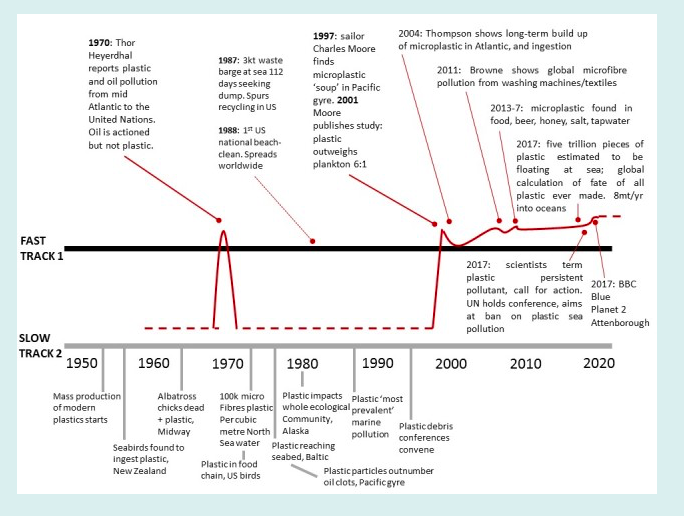
Source: Chris Rose
Green Deal – No Surprises Here
As Europe faces the flood of new legislation from the Green Deal, you realise that very few of the issues being raised, and being put forward for legislation are new. Most have been around for a long time.
This means that those interested in an issue could just go to their filing cabinet, update their a well-researched background briefing, policy solution and legislative text. I’ve discovered, few have.
Despite the direction being very crystal clear since 16 July 2019, with the publication of the von der Leyen’s Political Guidelines (link), a lot of people seem to have blanked out and woke up 6 months later after the publication of the first work programme on 29 January 2020.
Look at the Signals
In any field you can, with a little hard work, devise clear and objective indicators to track, that suggest when you need to start working in earnest.
I have found that in most cases you get to know about 10 years out before it is too late or a lot more expensive to do anything.
My Trackers
I personally use them to track a few areas:
- The shift from public policy issues to political issues ripe to be taken up as legislative proposals.
- Chemical substance regulation – when the scientific debate turns to regulatory action.
- Fisheries
You can get an idea of what these canaries in the mine may look like in this post (link).
These can all be converted into algorithms.
It is useful to track some basic indicators. It gives you a heads up something is likely to happen, and it acted upon, allows you to take the steps to avoid the problem.
I started to use them after shifting away from academia and working for politicians. On every issue I worked on, it was clear the dye had been cast at least ten years beforehand.
The Collapse of Cod Stocks
If you look at the collapse of the North Sea Cod in the North in 2001, 2006 and again in 2019, or the Eastern Baltic Cod Stock in 2002 and 2019, the signals were clear.
First, let’s look at the North Sea Cod. It”s an iconic species that’s been subject to world-class miss-management.
ICES, the scientific advisors whose job it is to look at fish stocks, show a long decline in catches and increasing fishing pressure.
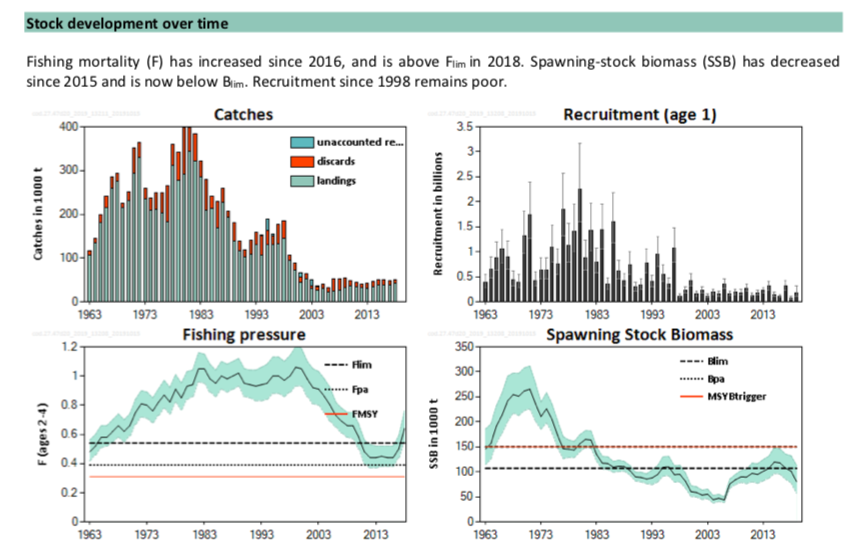
Source: Link
The track record of setting catch limits in excess of advice, along with large levels of discards or illegal fishing, sets in motion, over time, stock collapse.
And, even when the stocks are in a dreadful position, like in 2006 or in 2019, fisheries ministers still can’t stomach the idea of following the best advice and stop fishing.
In 2001, the Commission stepped in with emergency measures and closed it down (link).
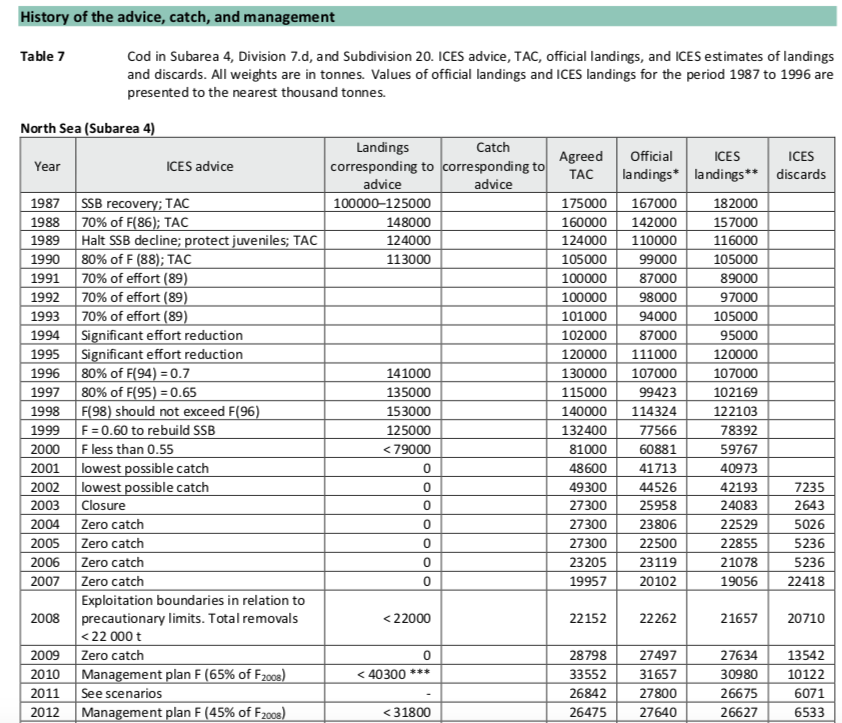

A similar pattern can be seen for eastern Baltic cod (see link).
Catches have been declining for some time. The main reason is catching too so many cod. The stock crashed in 2003 and in 2019.
On 14 April 2003, the Commission introduced emergency measures to deal with stock collapse (link). They had to back in
on 23 July 2019, the Commission had step in and impose an emergency ban on fishing for cod in the Eastern Baltic (link).
It seems to have come as a surprise to them. If you look at the charts below, you’d be surprised the collapse had not happened earlier.
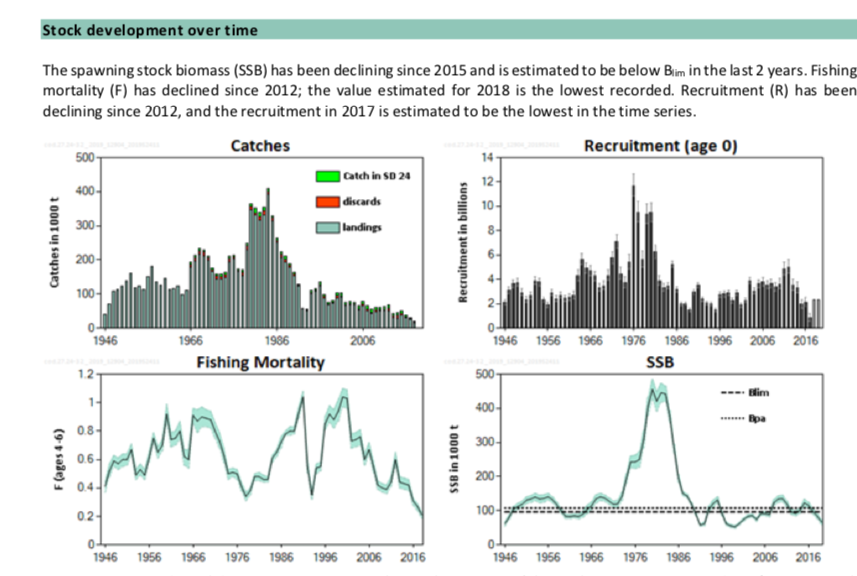

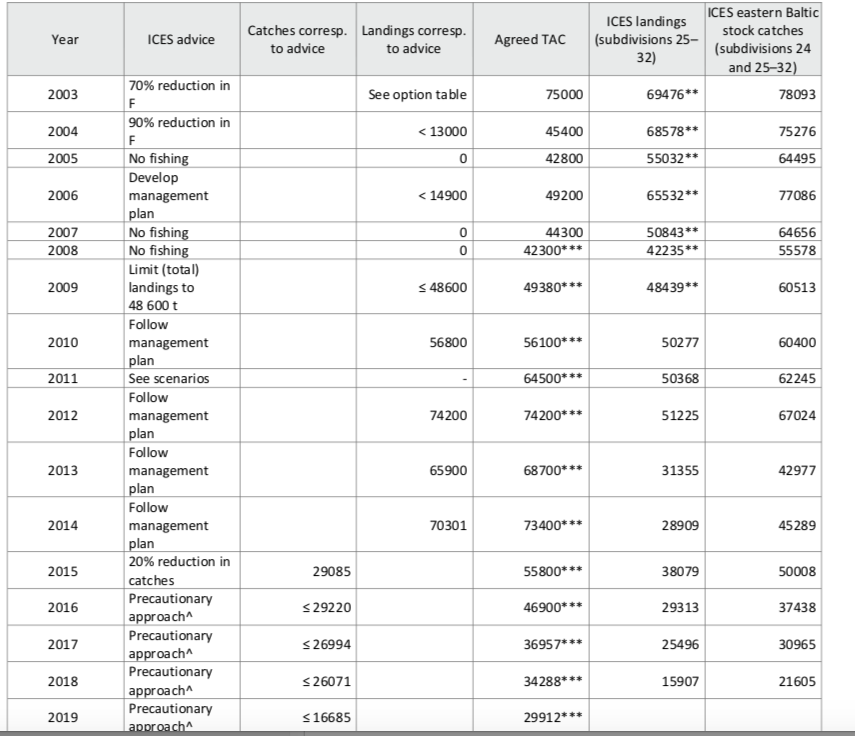
Can we learn from our mistakes?
Unfortunately, fishing regulators and ministers sometimes can’t learn from their mistakes. You’d have thought one collapse was enough.
I know there are other stocks whose decline into the precipice of collapse mirrors that of the North Sea and Eastern Baltic Sea Cod. Officials and Ministers even use the same stock phrases they used before cod stocks collapsed.
You can set up early warnings that allow you to act. You don’t need to wait to step in. Maybe I need to learn how code to set up the algorithms!